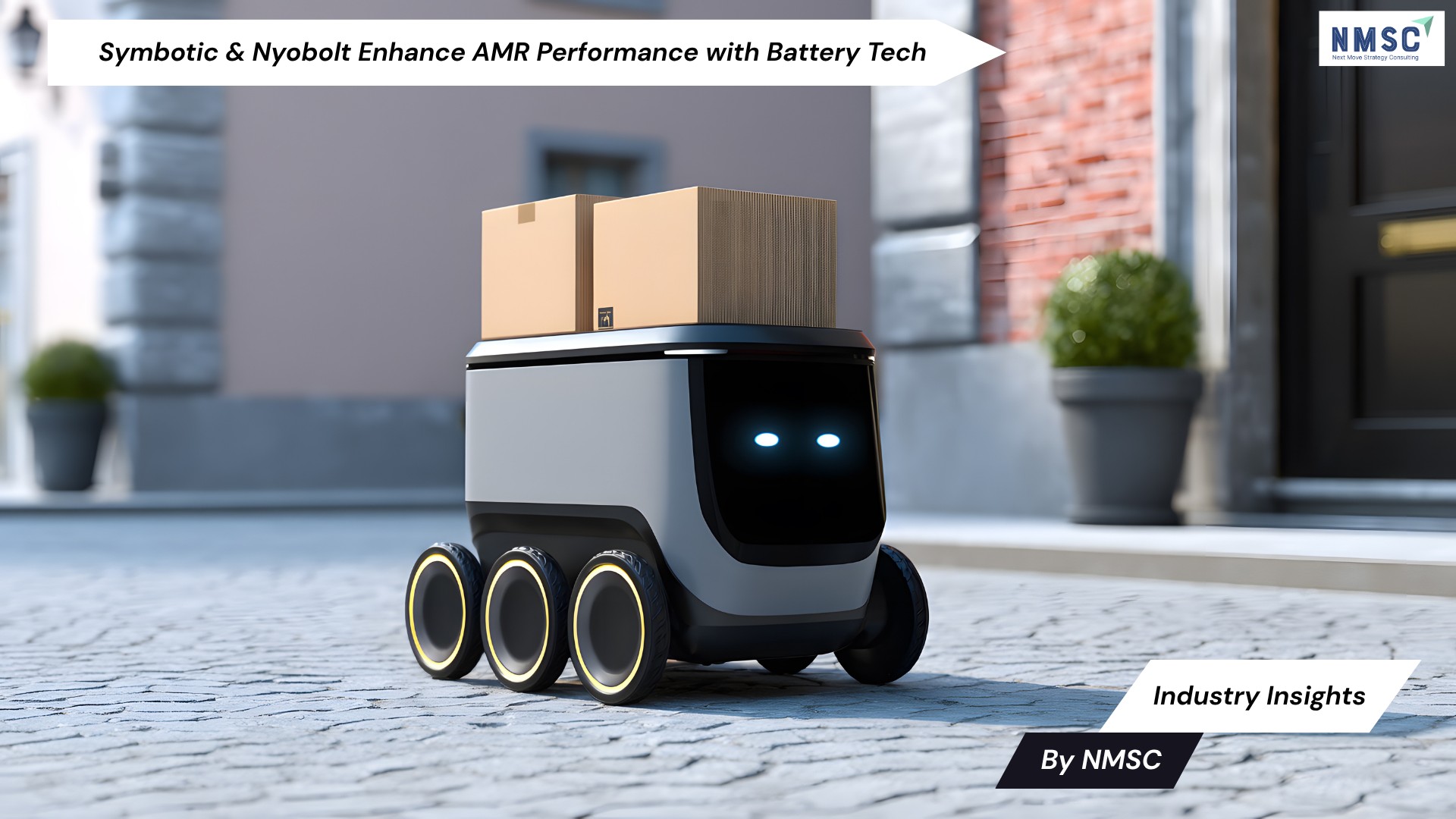Warehouse Robotics Market is Expected to Reach USD 28.32 Billion by 2030
Published: 2025-03-04
The rising investment in industry 4.0 initiatives along with growing labour shortage drives the warehouse robotics market growth.
According to a new research report by Next Move Strategy Consulting, the global Warehouse Robotics Market size was valued at USD 10.11 billion in 2024 and is predicted to reach USD 28.32 billion by 2030 with a CAGR of 17.7% from 2025-2030. In terms of volume the market size was 479.6 thousand units in 2024 and is projected to reach 1466.6 thousand units in 2030, with a CAGR of 19.3% from 2025 to 2030.
The increasing global investment in Industry 4.0 is driving market expansion, as industrial robots play a vital role in achieving automation, precision, and efficiency in advanced manufacturing and smart factories.
According to the latest 2023 report by the World Economic Forum, investments in Industry 4.0 initiatives are on the rise, with digital transformation in the MENA region projected to reach USD 298.2 billion by 2032. This surge in Industry 4.0 investments is accelerating the adoption of industrial robots, fostering substantial market growth by enabling smarter and more efficient manufacturing processes.
Moreover, labour shortages in various countries will further raise demand for warehouse robots as they try to bridge worker gaps and ensure continued productivity among industries facing work shortages.
A report by the Conference Board in 2024 states, indicates that the U.S. requires 4.6 million new employees annually, while Germany, South Korea, and China face even greater shortages of 1.6 million, 2 million, and 47 million workers, respectively. These workforce deficits are making companies to adopt automation and robotics to meet production demands efficiently, thus driving the warehouse robotics market expansion.
However, high initial investment and complexity in integrating industrial robots into existing systems are acting as major growth inhibitors for the market. Most automation solutions are unaffordable by SMEs, hence their growth is restricted. These financial barriers make it difficult for smaller enterprises to implement robotic automation, slowing adoption and ultimately restraining overall warehouse robotics market growth.
On the contrary, the increasing demand for cobots among SMEs boost the growth of the market as the cobots can be deployed to work alongside the human workers by reducing the need for major safety measures. The cobots are also considered cost-efficient as they require minimal setting and easy programming for various purposes. According to an estimate from the latest report by Association for Advancing Automation, the sector of collaborative robots is expected to grow over the next several years to USD 7.5 billion by 2027, accounting for roughly 29% of the overall industrial robots. Falling prices, their flexibility, and ease of integration-these factors will increase the adoption of cobots, that in turn, will make automation more viable for enterprises and propel the warehouse robotics market demand.
Request for a FREE Sample PDF Report
According to the report, leading players operating in the warehouse robotics industry include ABB Ltd., Omron Corporation, KUKA AG, Fanuc Corporation, JBT Corporation, Teradyne Inc., Geekplus Technology Co., Ltd., GreyOrange, Bastian Solutions, LLC, Locus Robotics, Seegrid Corporation, Doosan Robotics Inc., Lucas Robotics, Zebra Technologies Corporation, Mitsubishi Electric Automation Inc. and among others.
These market players are adopting strategies, including product launches and partnership across various countries and regions to maintain their dominance in the warehouse robotics market.
For instance, January 2025, Teradyne Robotics and Analog Devices partnered on the development of artificial intelligence-driven collaborative automation. The new collaboration incorporates Analog Devices' technology into Teradyne's robotics, further improving performance, safety, and efficiency in many industries, including semiconductor manufacturing.
Additionally, November 2024, FANUC Corporation announced the introduction of the new five-axis model M-950iA. It is a serial-link articulated robot that operates in confined and restricted work areas. It handles up to 500 kg in payloads. Accordingly, it carries both high-payload capacity along with wide-range motion.
Also, in October 2024, Mitsubishi Electric Automation Inc. launched the MELFA RV-12CRL factory robot arm, that reaches up to 4.9 feet and has a payload of 26 pounds. It can be applied in most versatile ways for machine tending, case packing, pick-and-place applications among others.
Furthermore, in June 2024, ABB Robotics launched IRB 7710 and IRB 7720 warehouse robot that offer a 25% reduction in cycle times and a 30% decrease in energy consumption, enhancing efficiency and sustainability.
Moreover, May 2024, OMRON partnered with Neura Robotics to enhance manufacturing efficiency through AI-driven cognitive automation. The OMRON Intelligent Cognitive Robot (iCR) series, built on Neura Robotics’ MAIRA line, integrates advanced sensors, AI technologies, optional 3D vision, and safety features for industrial applications.
Key Insights from the Warehouse Robotics Market Report:
-
The information related to key drivers, restraints, and opportunities and their impact on the warehouse robotics market is provided in the report.
-
The value chain analysis in the warehouse robotics market study provides a clear picture of the roles of each stakeholder.
-
The report provides an analysis of the warehouse robotics market share and competitive landscape of key players in the industry.















Add Comment